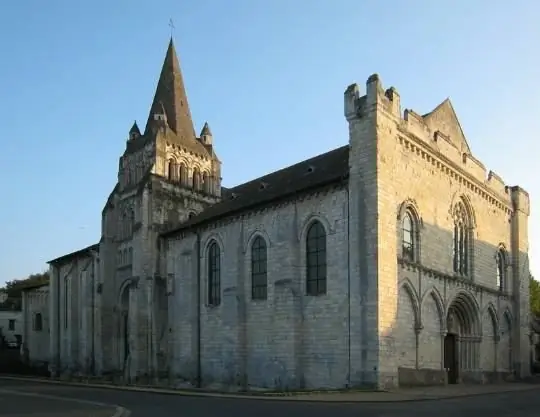
Description of the attraction
The Church of Notre-Dame de Cuno is located in the small commune of Cuno, now known as Chenutte-Treve-Cuno, central France, in the Loire region. This settlement, home to just over 1000 people, was formed only in 1973, when two small villages were merged into a single city. However, the history of this area goes back to the beginning of the XI century - the first castle here was built in 1026 by a prominent figure of the Middle Ages - Fulk III Black (Nerra), Count of Anjou.
The church itself was built around the same historical period, possibly even by Fulk Nerra himself. However, the first building on this site appeared in the 4th century, when Christianity had just come to this region. The "Baptist" of this area was St. Maxensel, who founded a monastery here, destroyed by the Vikings in the 9th century. The modern church is already made in the Romanesque style and belongs to the period of the Early Middle Ages. She received financial support from the Counts of Anjou themselves, and a separate part of the taxes levied at the Kuno customs point went to her maintenance.
Soon a Christmas grotto was formed near the church, where, according to legend, drops of the Virgin Mary's milk were kept. After that, the Church of Notre Dame immediately turned into an object of pilgrimage. During the Great French Revolution, the building was not badly damaged. It has not lost its sacred significance either - in addition to the sacred grotto, the church houses a carved wooden sarcophagus with the relics of St. Maxensel, the founder of the first monastery built on this site.
The exterior of the church cannot be called brightly decorated - it is made in the austere style typical of Romanesque architecture. The interior is amazing, primarily due to its perspective, representing the cathedral more than it really is. In the interior decoration of the church, 223 graceful columns, made in the style of the Anjou Gothic, stand out. The walls of the room are painted with ancient frescoes on religious themes, which are a real masterpiece of medieval art.
Thanks to its stunning acoustics, organ concerts are held every May in the Notre Dame de Cuno church. Since 1846, the church has been a monument of the history and architecture of France. It is interesting that Prosper Mérimée himself, the famous French writer, took part in the restoration work in 1838.






